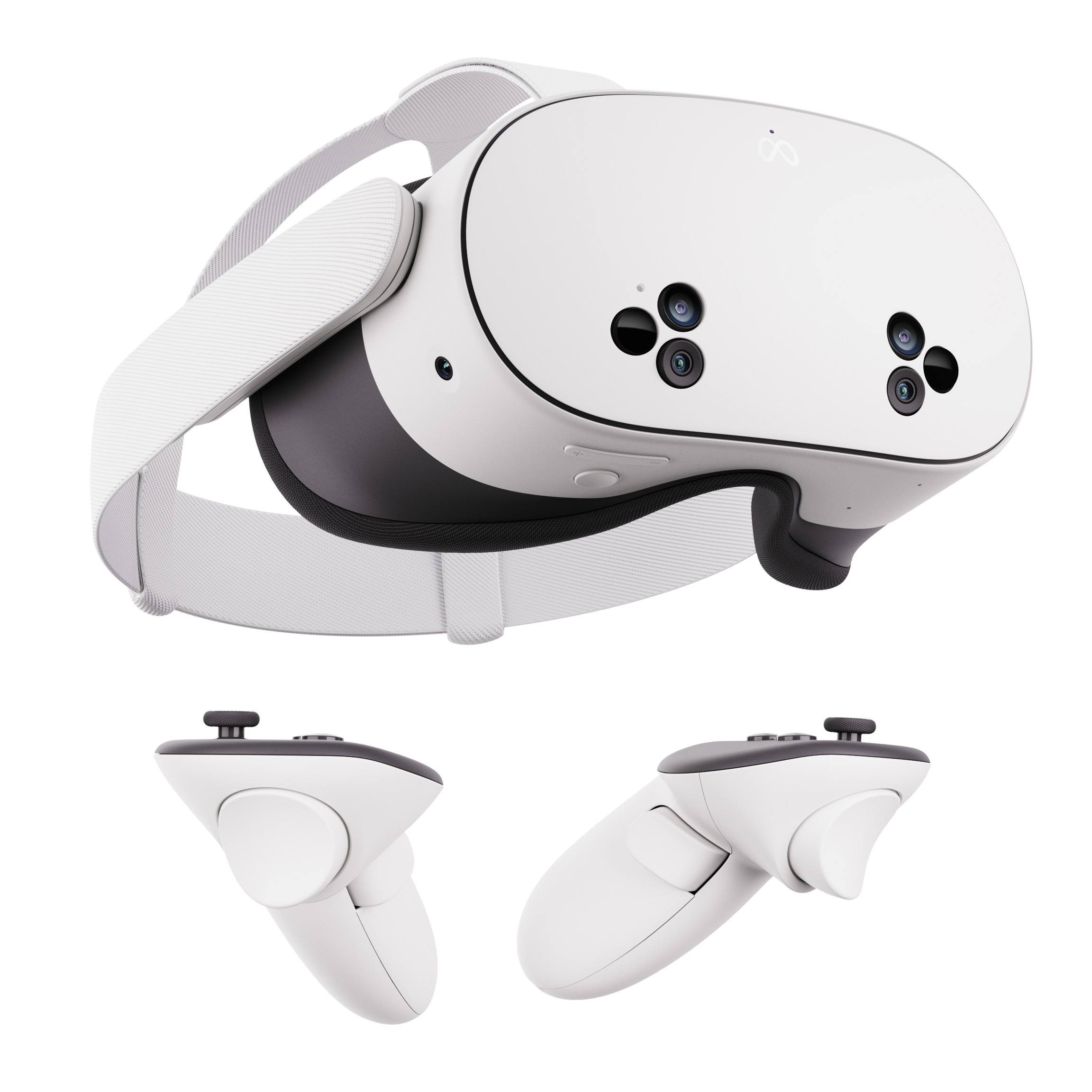
Half-upgraded, half-unchanged
To hit the same $299 price point as in 2020, Meta made its sort-of next-gen Quest 3S headset emulate the Quest 2’s quirks, ignoring some of the pricier Quest 3 upgrades like pancake lenses. Despite looking and feeling like a Quest 2, the Quest 3S has some subtle (and not-so-subtle) perks for long-time VR fans.
For
- Full-color, high-resolution mixed reality
- Next-gen Snapdragon chip with 33% more RAM
- New cloth strap design
- Dual flood LEDs for low-light gaming
- Upgraded Touch Plus controllers
Against
- No upgrades to lenses, resolution, or FoV
- No more 3.5mm jack
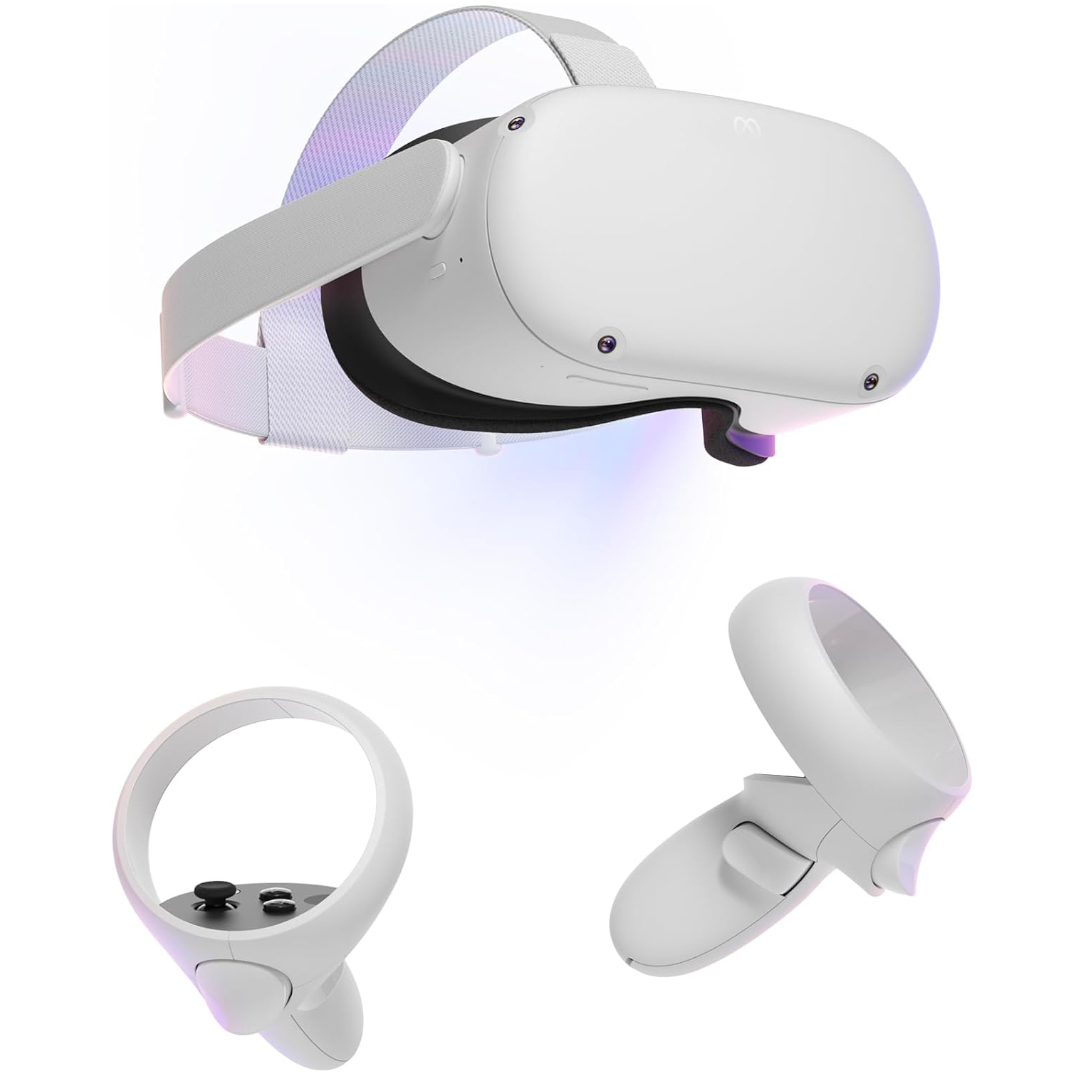
Not dead yet
Even though Meta doesn’t sell the Quest 2 anymore, most VR developers still code their games for the Quest 2 first — targeting its millions of users — before upscaling them to the Quest 3S and 3. Since the Quest 3S uses the Quest 2 as its template, you won’t find changes to the resolution, lenses, and core design.
For
- Matches 3S lens, resolution, and field of view
- Has a 3.5mm jack for headphones
- Still supports nearly all the same games
- Wide array of accessories
Against
- Last-gen chipset can’t handle Quest 3 exclusives & enhancements
- Slower loading times
- Low-res, B&W passthrough
- Older controller design
We’re comparing the Meta Quest 3S vs. Quest 2 for anyone with the 2020 headset considering an upgrade. Despite the higher number, the Quest 3S will feel virtually identical to Quest 2 owners when they first try it on. Its upgrades have more to do with hardware than design, but they’re still significant.
The Quest 2 sold over 20 million units because of its affordability and wire-free design; that holds true with the Quest 3S, which costs the same ($299), weighs about the same, still lacks any tethers, and brings back the same gaming library — now with enhanced graphics.
Based on our Quest 3S hands-on, we have a real sense of what Quest 2 owners should expect from the new headset. Let’s break down all of the key similarities and differences.
| Category | Meta Quest 3S | Meta Quest 2 |
|---|---|---|
| CPU | Snapdragon XR2 Gen 2 | Snapdragon XR2 Gen 1 |
| RAM | 8GB | 6GB |
| Storage | 128GB ($299); 256GB ($399) | 64GB, 128GB, 256GB |
| Display | 1,832 x 1,920 LCD; 773 PPI; 20 PPD | 1,832 x 1,920 LCD; 773 PPI; 20 PPD |
| FOV | 96º H; 90º V | 96º H; 90º V |
| Lens | Fresnel | Fresnel |
| Mixed reality | 4MP RGB (18 PPD) | B&W Mono (4 PPD) |
| Depth sensor | Software | Software |
| Slimness (excluding facial interface) | 73.9mm | 93.1mm |
| Weight | 514g | 503g |
| Battery | 4,325mAh | 3,640mAh |
| Controllers | Touch Plus | Touch |
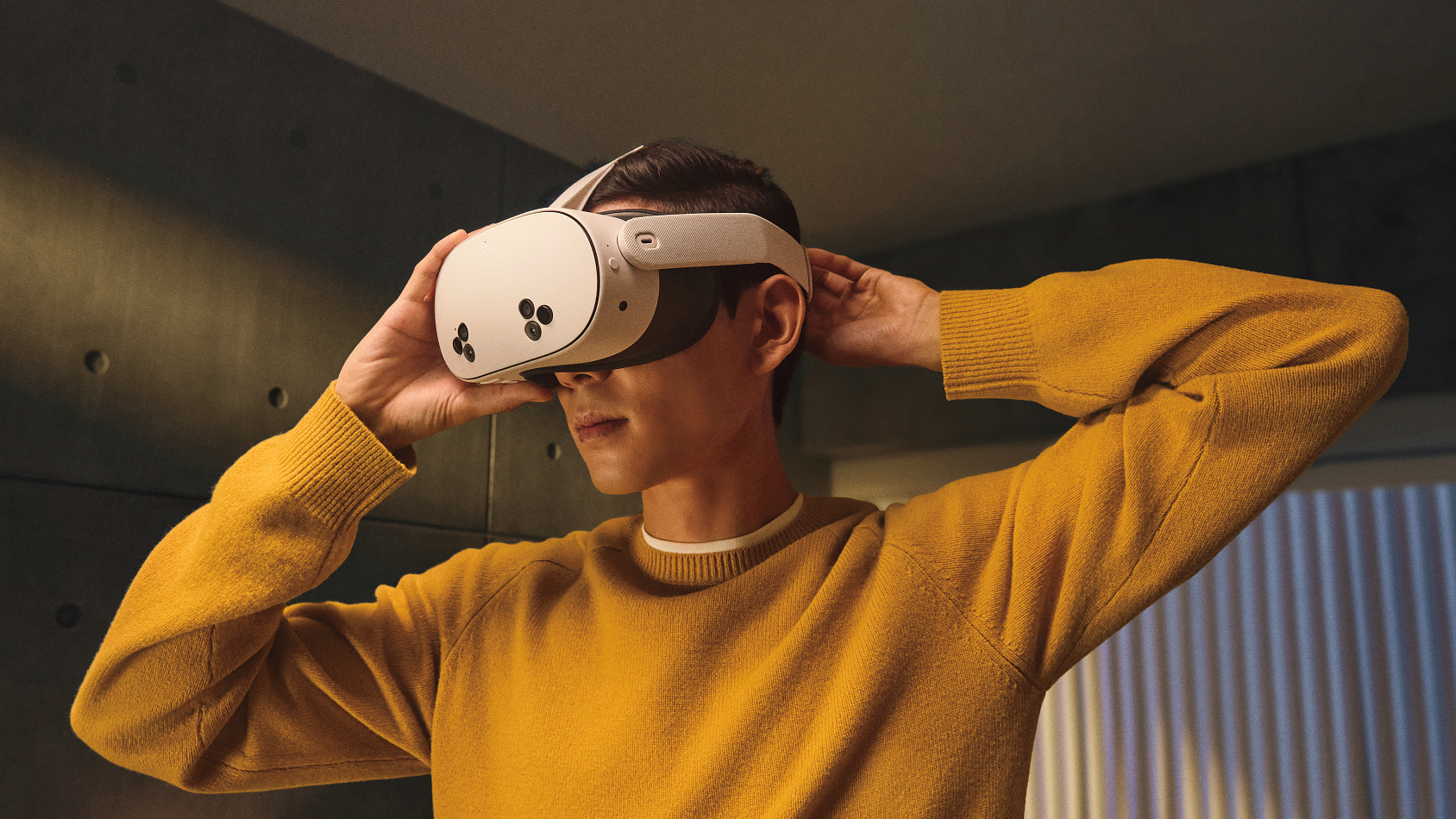
In order to keep the Quest 3S at an affordable price, Meta held back some of the Quest 3 upgrades over the Quest 2. Because of that, the Quest 3S and Quest 2 share many traits:
Fresnel lenses: While the Quest 3 upgraded to pancake lenses that make the headset 30% slimmer, the Quest 3S uses the same Fresnel lens, which requires more empty space between lens and display. It also creates a noticeable “sweet spot” when using either headset; you’re more likely to turn your head to look around a VR world because the periphery appears blurrier than it does with pancake lenses.
IPD lens adjustment: You can adjust the lenses to any of three interpupillary distances (IPD): 58mm, 63mm, or 68mm. We have a guide on how to measure your IPD, which also mentions that you can slide the lenses between these settings — around 60.5mm or 65.5mm — if your IPD doesn’t perfectly match these presets.
LCD resolution: Meta uses the same LCD in the Quest 2 and Quest 3S, both sharing 1,832 x 1,920 pixels per eye, which equals 773 pixels per inch or about 20 pixels per degree. If you compare the Quest 3 vs. Quest 2 for visuals, the newer headset hits 2,064 x 2,208, or about 25 PPD, giving a significant boost.
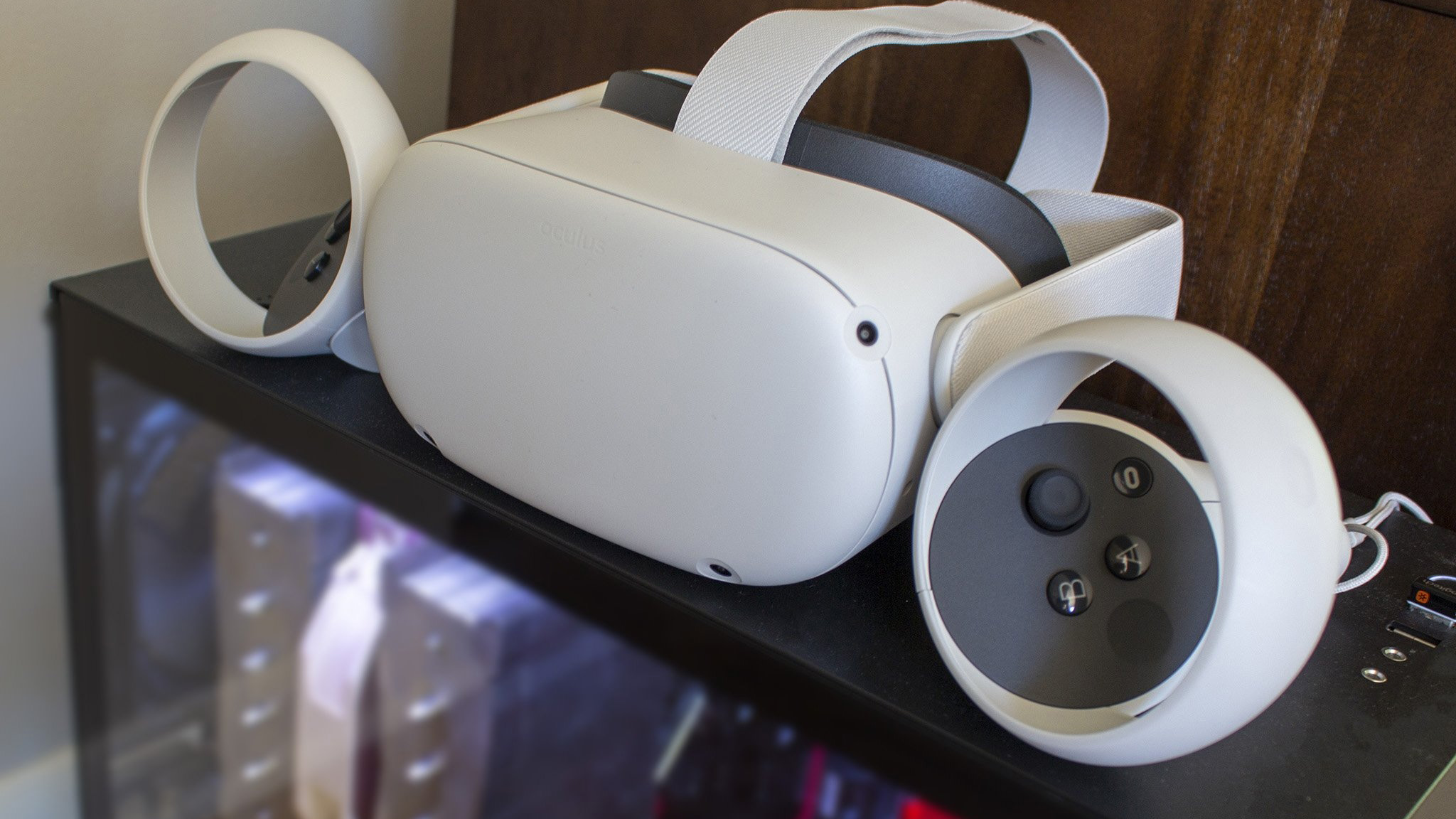
Field of view: Both the Quest 3S and Quest 2 have a 96º horizontal view and 90º vertical view; they fall short of the Quest 3 (110º horizontal; 96º vertical).
Wireless, modular design: This is stating the obvious, but it’s fair to point out that both the Quest 3S and Quest 2 work entirely on battery power, unlike most other VR headsets like the Valve Index, PSVR 2, or Apple Vision Pro. Also, Meta designs the Quest so that you can detach the strap or facial interface without needing to unscrew anything or void your warranty. This allows you to install a better accessory with very little difficulty.
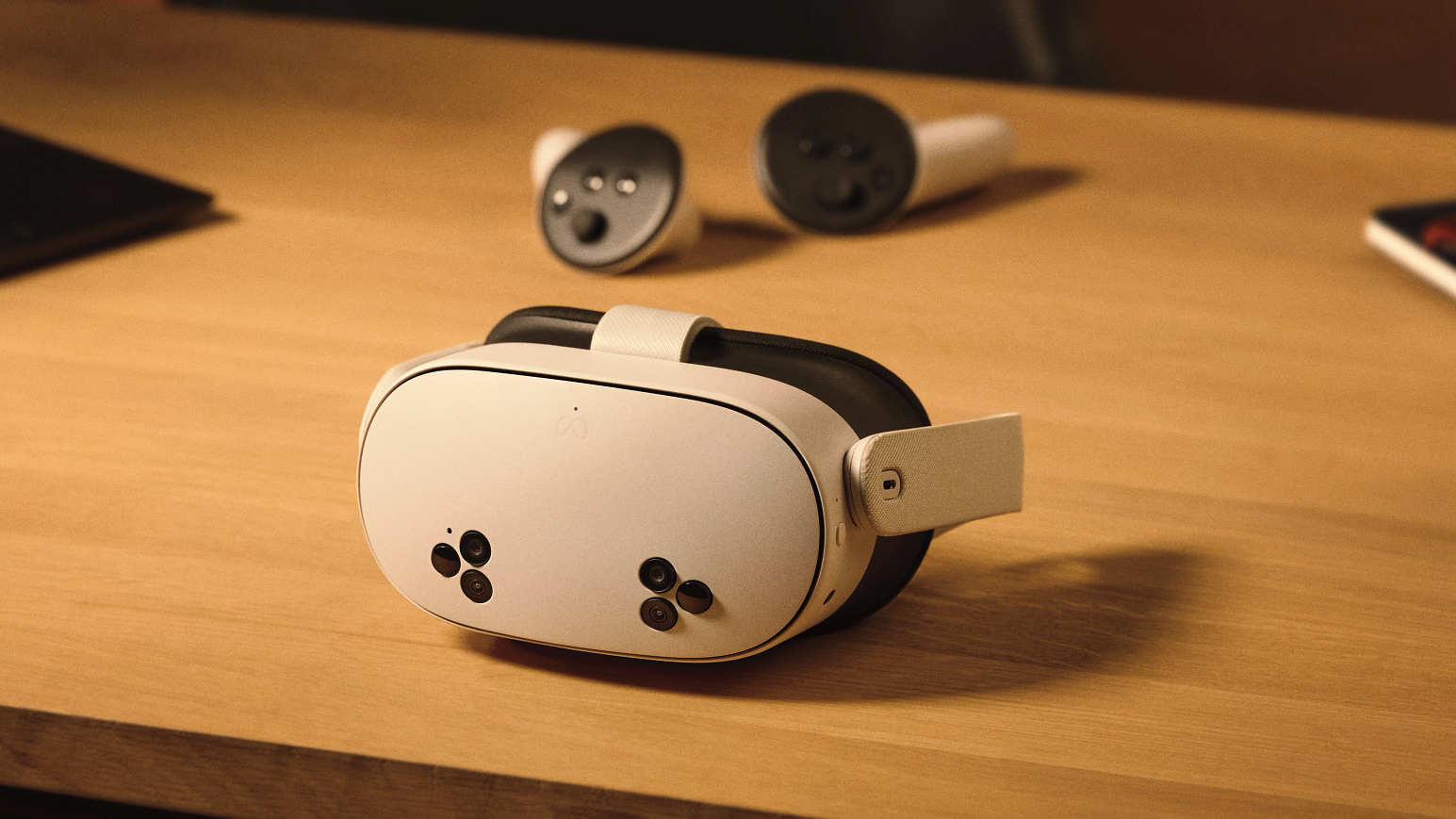
Even though both headsets use Fresnel lenses, Meta found a way to make the Quest 3S 20% slimmer than the Quest 2, or about 19mm / 0.75in. thinner. Meta also made the Quest 3S look flatter, with a harder line along the front edge where the Quest 2 is more curved.
In terms of weight, the Quest 2 weighs 11 grams less, or about 0.4 ounces. You’re not going to notice the difference; either way, you’re going to want an Elite Strap to balance the weight better.
The most obvious design difference is the camera array; we’ll talk about mixed reality next, but strictly from an aesthetic perspective, the Quest 3S puts its camera front and center in a fun triangular pattern, whereas the Quest 2 camera sensors are smaller, isolated recesses.
Frustratingly, Meta chose to drop the 3.5mm headphone jack from the Quest 2 and 3 in the 3S; your only options are to use the built-in speakers or wireless earbuds with a USB-C receiver that allows for charging passthrough in case you have a battery pack. And on that note, the Quest 3S has its USB-C charging port in the right arm, whereas the Quest 2 port is directly on the headset body.
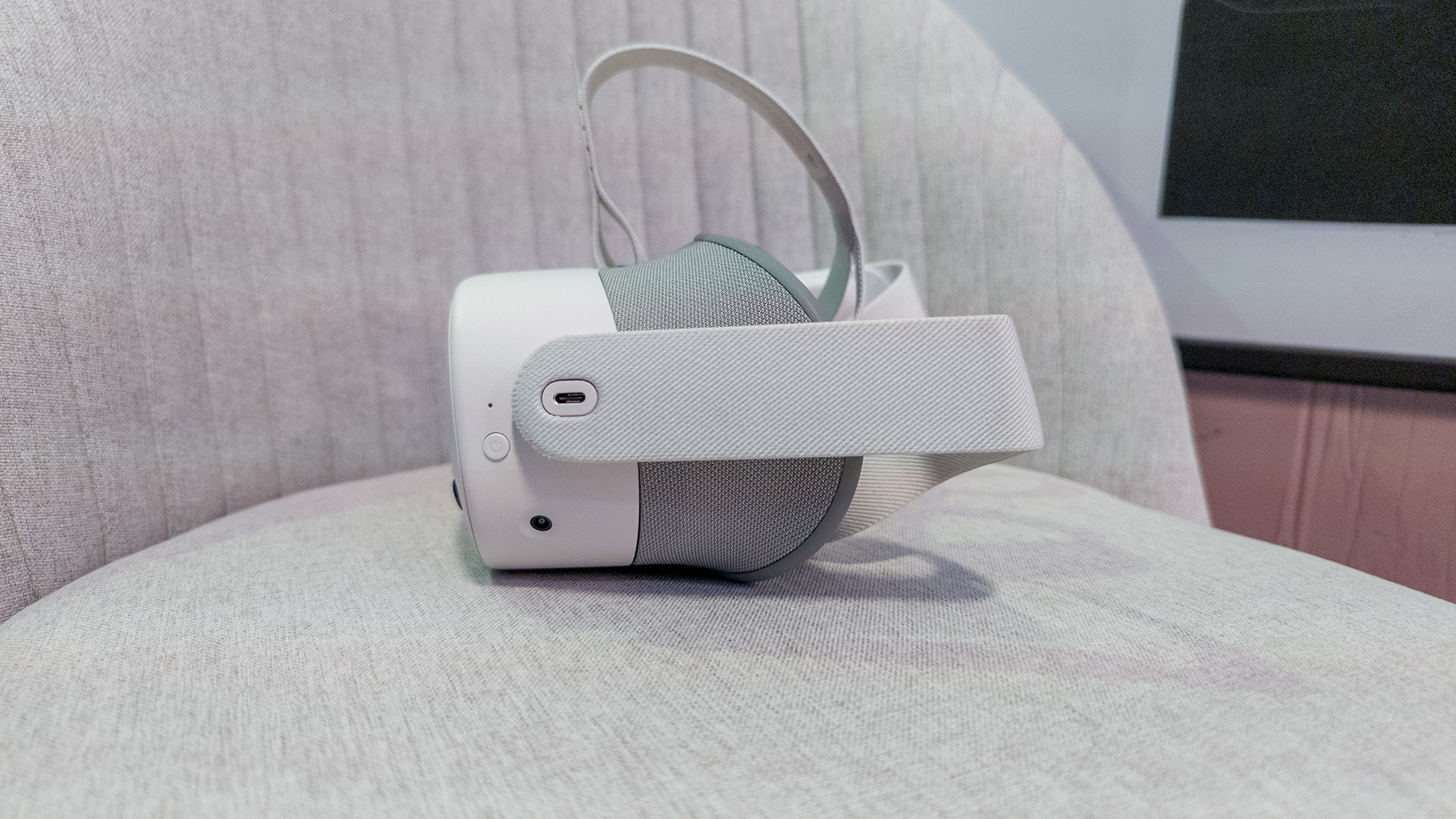
Both headsets have a default cloth strap, and our Quest 3S tester said that it “felt identical” to the Quest 2 in terms of comfort and support. That said, there is one difference: the Quest 2 strap had a single broad top strap with velcro, while the Quest 3S top strap branches off in a Y shape to cup both sides of your head, theoretically preventing it from sliding to one side as easily.
Either headset nets you about 2.5 hours of battery life in ideal conditions (according to Meta), but we expect your Quest 2 capacity has dipped naturally over the last four years. The older headset has 684mAh less capacity, but the Quest 3S uses more battery life because of things like the new cameras, LEDs, and extra RAM. Regardless, anyone who bought a Quest 2 battery pack will probably want one for the Quest 3S.
As for controller design, the Quest 3S uses the same next-gen Touch Plus controllers as the Quest 3. They’re not that different from the Quest 2 in terms of tracking accuracy, but they no longer need the giant tracking rings and they have improved TruTouch Haptics for games.
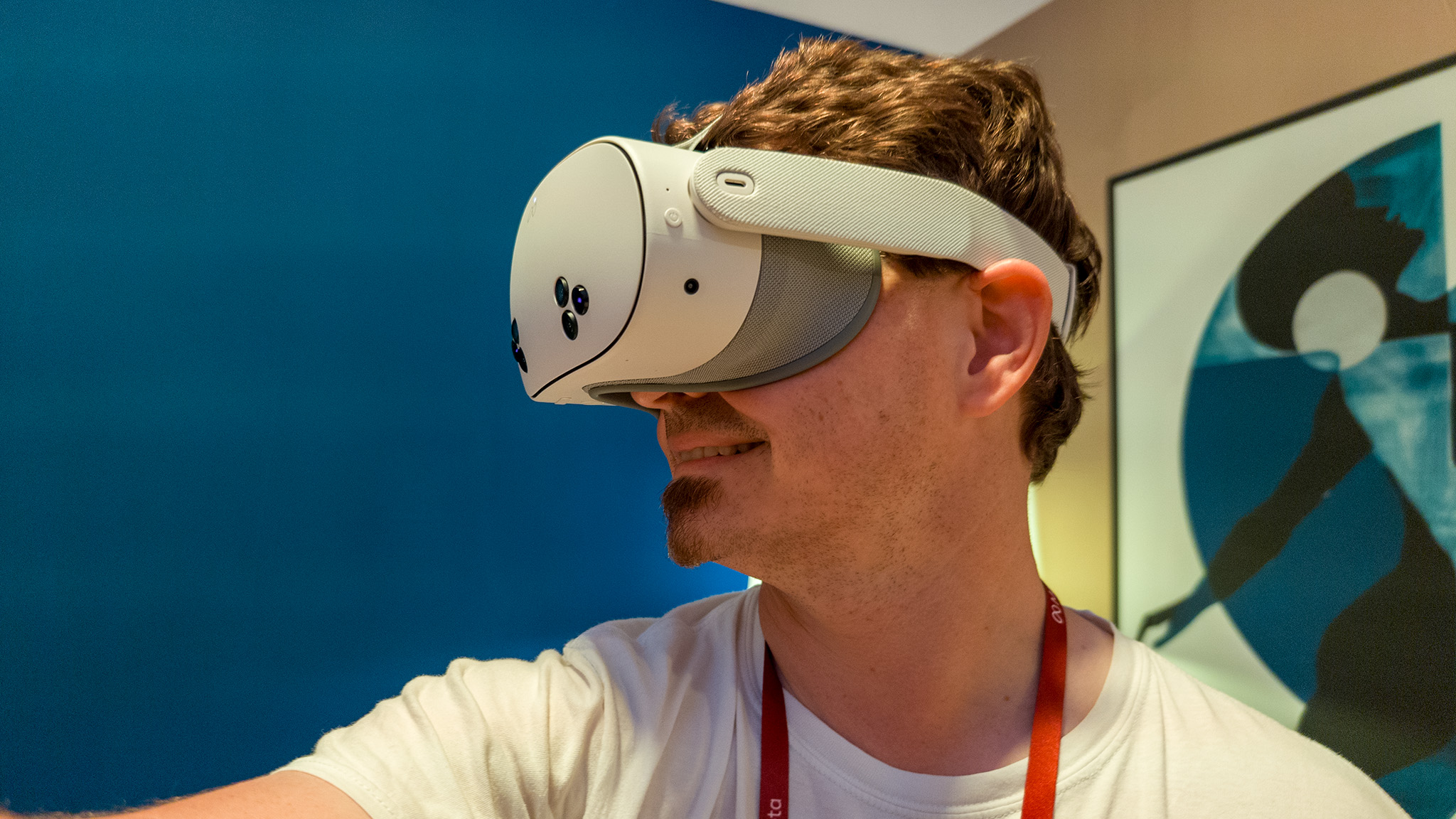
The biggest Meta Quest 3S upgrade is in performance. It uses the Qualcomm Snapdragon XR2 Gen 2, while the Quest 2 uses the XR2 Gen 1. It also has 8GB of RAM instead of 6GB.
Practically speaking, the Quest 2 and Quest 3S share most of the same hundreds of Quest games. However, on the Quest 3S, many of your old Quest 2 titles get graphical enhancements; developers can patch games to add 4K textures, higher refresh rates, dynamic lighting and shadows, and reduced fog, as well as other changes at the developer’s discretion.
Not all Quest 2 games get Quest 3 and 3S patches — we know of about 100 games with them — but even without a specific patch, you’ll see reduced loading times for games and apps.
Also, there are some upcoming Quest games that are exclusive to the Quest 3S & 3 because the Quest 2’s CPU can’t handle them. AAA titles like Alien: Rogue Incursion and Batman: Arkham Shadow will give Quest 2 owners FOMO unless they upgrade, and we could see more Quest 3 exclusives as the Quest 2’s chip becomes increasingly obsolete and more users swap to newer headsets.
More commonly, you’ll see Quest 3 games that don’t work on Quest 2 because they require full color mixed reality, such as Laser Dance, Hello Dot, Living Room, and Starship Home. This also applies to software features like Meta AI with Vision, since it requires high-res passthrough.
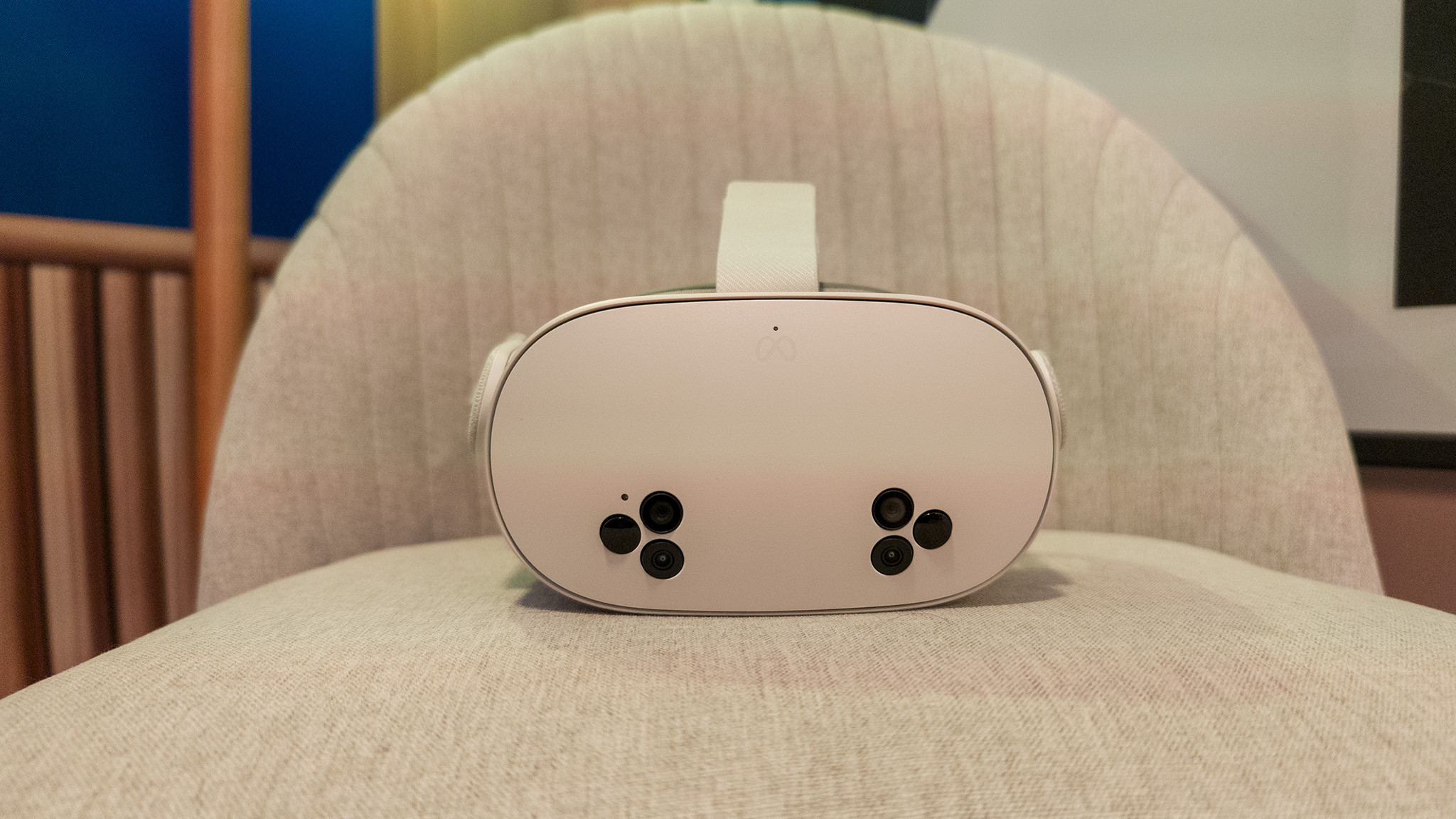
On that topic, the Quest 2 and Quest 3S share the same number of standard VGA sensors for inside-out tracking, but when it comes to passthrough the Quest 2 uses a black-and-white camera with less than 1MP resolution, showing just 4 PPD in ugly, blurry gray when you’re checking out your surroundings.
The Meta Quest 3S received the same 4MP cameras as the Quest 3, delivering 18 pixels per degree in full color. While mixed reality mode had some issues in the year since the Quest 3 launched, the v64 update improved color and resolution and the v66 update removed warping around hands and objects. The Quest 3S benefits from all these tweaks straight out of the gate, so you don’t need to take off the headset as often as the Quest 2 to check in with family or walk around the house.
Meta says that these dual 4MP cameras enable depth tracking via software. The Quest 3 has an actual hardware depth sensor, but the Quest 2 wasn’t designed to track depth the same way, so this should theoretically make the Quest 3S better for hand tracking — though we suggest waiting for our full review for confirmation.
Another interesting Quest 3S addition is two flood LEDs “for illumination and more reliable hand interactions across environments and lighting conditions.” In theory, this would let you play games in dimly-lit rooms with no fear that the headset will fail to track your actions; we could test this in the normally-lit Meta demo space, so you’ll have to wait for our review to see how well this works.
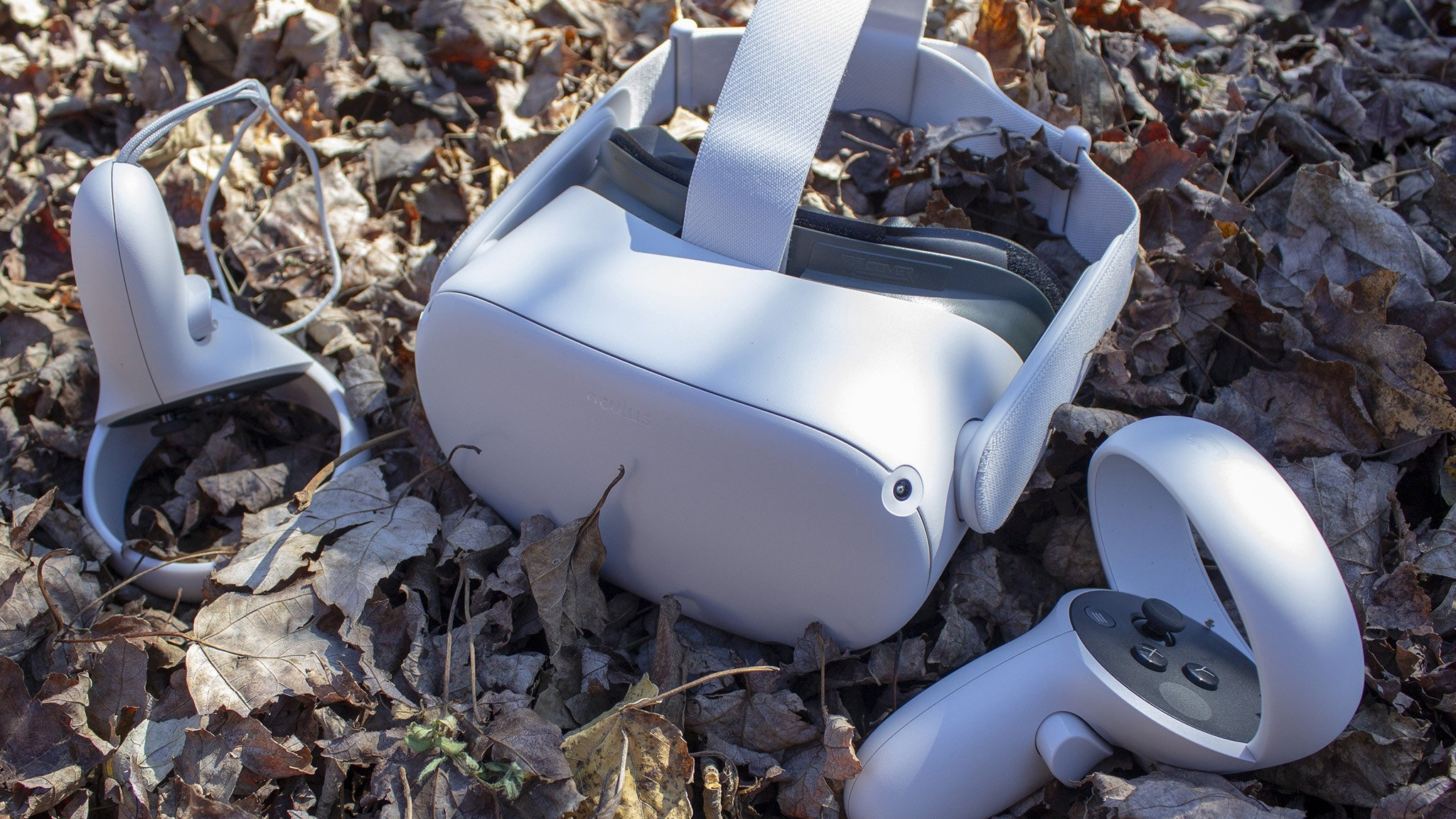
The Meta Quest 3S is objectively better than the Quest 2; the only question is whether the upgrades are enough for you to spend another $299 (or $399 for doubled storage).
Meta doesn’t sell the Quest 2 anymore; you may be able to find one used for cheap, but the lack of mixed-reality hardware is a major negative in our books. It makes using a headset much less isolating, so you’re not constantly taking it on and off if you’re a parent or pet owner having to put out fires.
While the Quest 2 still has new games coming in every day, their versions look dated, run at a lower refresh rate, and take longer to load. The Quest 3S still has the same resolution and lenses, true, but even if you’re only seeing a sweet spot, it’ll still look and run better than before.
If you’re uncertain whether the Quest 3S does enough for you as a Quest 2 owner, you may want to read our Quest 3S vs. Quest 3 guide instead and choose whether it’s worth the extra cost for a higher-res, crisper, and wider view.

Half-upgraded, half-unchanged
Choose the Meta Quest 3S to keep access to the newest Quest titles, especially those with mixed-reality modes or high-end graphics. Keep your Quest 2 if you’re an occasional VR player who’s happy with your current experience, or choose the Quest 3 instead, if you need better resolution.

Not dead yet
You can buy a used Quest 2 if it’s especially cheap, but it makes sense to choose the Quest 3S if you want it to last longer. Still, it was a popular VR headset for a reason, which is why the Quest 3S largely kept its design. The main reason to choose the Quest 3S instead is full color mixed reality.


